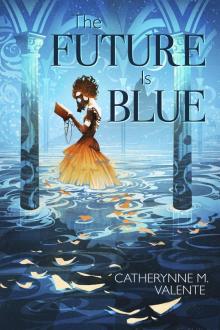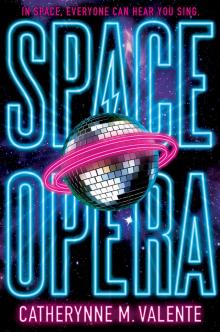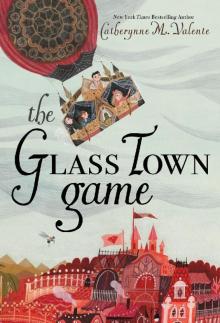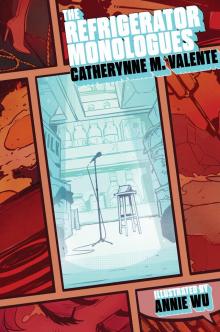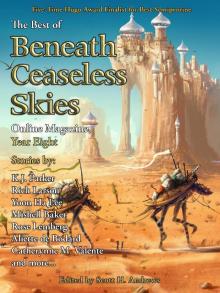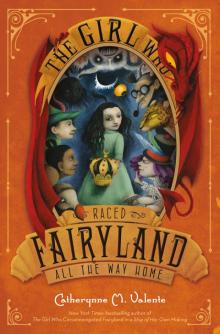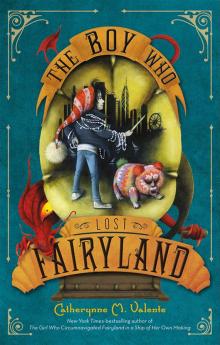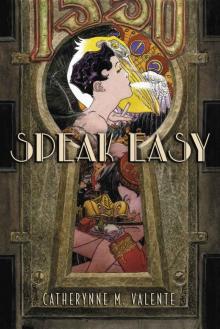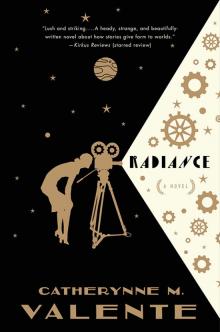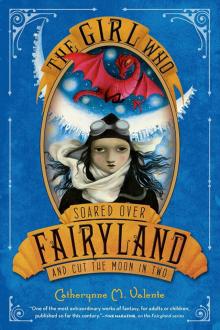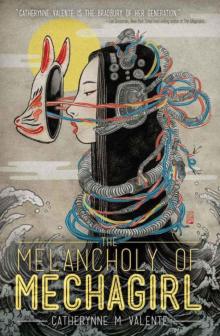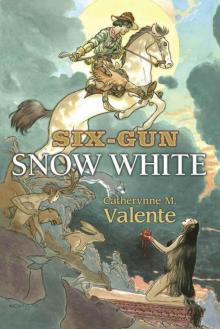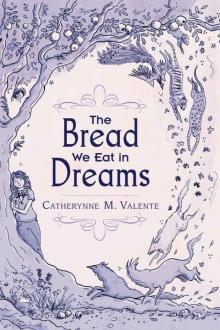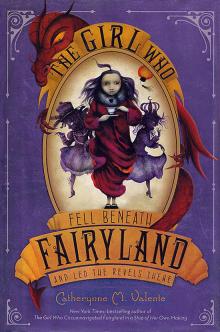


Maps in a Mirror
Orson Scott Card

MAPS IN A
MIRROR
TOR BOOKS BY ORSON SCOTT CARD
ENDER
Ender’s Game
Speaker for the Dead
Xenocide
Children of the Mind
Ender’s Shadow
Shadow of the Hegemon
Shadow Puppets
First Meetings
The Folk of the Fringe
Future on Fire (editor)
Future on Ice (editor)
Lovelock (with Kathryn Kidd)
Pastwatch: The Redemption of Christopher Columbus
Saints
Songmaster
The Worthing Saga
Wyrms
THE TALES OF ALVIN MAKER
Seventh Son
Red Prophet
Prentice Alvin
Alvin Journeyman
Heatfire
The Crystal City
HOMECOMING
The Memory of Earth
The Call of Earth
The Ships of Earth
Earthfall
Earthborn
WOMEN OF GENESIS
Sarah
Rebekah
SHORT FICTION
Maps in a Mirror: The Short Fiction of Orson Scott Card (hardcover)
Maps in a Mirror Volume 1: The Changed Man (paperback)
Maps in a Mirror Volume 2: Flux (paperback)
Maps in a Mirror Volume 3: Cruel Miracles (paperback)
Maps in a Mirror Volume 4: Monkey Sonatas (paperback)
MAPS IN A
MIRROR
THE SHORT FICTION OF
ORSON SCOTT CARD
The author and publisher have provided this e-book to you without Digital Rights Management software (DRM) applied so that you can enjoy reading it on your personal devices. This e-book is for your personal use only. You may not print or post this e-book, or make this e-book publicly available in any way. You may not copy, reproduce or upload this e-book, other than to read it on one of your personal devices.
Copyright infringement is against the law. If you believe the copy of this e-book you are reading infringes on the author’s copyright, please notify the publisher at: us.macmillanusa.com/piracy.
This is a work of fiction. All the characters and events portrayed in these stories are either fictitious or are used fictitiously.
MAPS IN A MIRROR: THE SHORT FICTION OF ORSON SCOTT CARD
Copyright © 1990 by Orson Scott Card
All rights reserved, including the right to reproduce this book, or portions thereof, in any form.
A version of the afterword to Book 5: Lost Songs originally appeared as “Mountains Out of Molehills” in Foundation: The Review of Science Fiction #45, Spring 1989.
An Orb Book
Published by Tom Doherty Associates, LLC
175 Fifth Avenue
New York, NY 10010
www.tor.com
Library of Congress Cataloging-in-Publication Data
Card, Orson Scott.
Maps in a mirror : the short fiction of Orson Scott Card / Orson Scott Card.
p. cm.
ISBN 978-0-765-30840-5
ISBN 0-765-30840-1 (trade paperback)
1. Fantastic fiction, American. 2. Science Fiction, American.
I. Title
PS3553.A655M37 1990
813′.54—dc20
90-38896
CIP
First Orb Edition: January 2004
Printed in the United States of America
0 9 8
To Charlie Ben,
who can fly
CONTENTS
BOOK 1
THE HANGED MAN
Tales of Dread
Introduction
Eumenides in the Fourth Floor Lavatory
Chrysalis 4, ed. Roy Torgeson (Zebra, 1979)
Quietus
Omni, August 1979
Deep Breathing Exercises
Omni, July 1979
Fat Farm
Omni, January 1980
Closing the Timelid
The Magazine of Fantasy and Science Fiction, December 1979
Freeway Games
Gallery, November 1979 (published title: “Hard Driver”)
A Sepulchre of Songs
Omni, June 1981 (published title: “A Sepulcher of Songs”)
Prior Restraint
Aboriginal SF, September 1986
The Changed Man and the King of Words
Omni, December 1981
Memories of My Head
(first publication)
Lost Boys
The Magazine of Fantasy and Science Fiction, October 1989
Afterword
BOOK 2
FLUX
Tales of Human Futures
Introduction
A Thousand Deaths
Omni, December 1978
Clap Hands and Sing
Best of Omni #3, ed. Ben Bova and Don Myrus (1982)
Dogwalker
Isaac Asimov’s Science Fiction Magazine, November 1989
But We Try Not to Act Like It
Destinies, August 1979
I Put My Blue Genes On
Analog, August 1978
In the Doghouse (with Jay A. Parry)
Analog, December 1978
The Originist
Foundations Friends, ed. Martin Harry Greenberg (Tor, 1989)
Afterword
BOOK 3
MAPS IN A MIRROR
Fables and Fantasies
Introduction
Unaccompanied Sonata
Omni, March 1979
A Cross-Country Trip to Kill Richard Nixon
Chrysalis 7, ed. Roy Torgeson (Zebra, 1979)
The Porcelain Salamander
Unaccompanied Sonata and Other Stories, Dial Press 1981
Middle Woman
Dragons of Darkness, ed. Orson Scott Card (Ace, 1981; as Byron Walley)
The Bully and the Beast
Other Worlds I, ed. Roy Torgeson (Zebra Books, 1979)
The Princess and the Bear
Berkley Showcase I, ed. Victoria Schochet (Berkley, 1980)
Sandmagic
Swords Against Darkness 4, ed. Andrew J. Offutt (Zebra, 1979)
The Best Day
Woman of Destiny, ed. Roy Torgeson (Berkley, 1984; as Dinah Kirkham)
A Plague of Butterflies
Amazing, November 1981
The Monkeys Thought Twas All in Fun
Analog, May 1979
Afterword
BOOK 4
CRUEL MIRACLES
Tales of Death, Hope, and Holiness
Introduction
Mortal Gods
The Magazine of Fantasy and Science Fiction, January 1979
Saving Grace
Night Cry 2:5, 1987
Eye for Eye
Isaac Asimovs Science Fiction Magazine, March 1987
St. Amy’s Tale
Omni, December 1980
Kingsmeat
Analog Yearbook, ed. Ben Bova (Baronet, 1978)
Holy
New Dimensions 10, ed. Robert Silverberg (Harper & Row, 1980)
Afterword
BOOK 5
LOST SONGS
The Hidden Stories
Introduction
Ender’s Game
Analog, August 1977
Mikal’s Songbird
Analog, May 1978
Prentice Alvin and the No-Good Plow (poetry)
Sunstone, August, 1989
Malpractice
Analog, November 1977
Follower
Analog, February 1978
Hitching
Mountainwest, 1978
Damn Fine Novel
The Green Pages, Oct
ober 1989 (as Noam D. Pellume)
Billy’s Box
The Friend, February 1978 (as Byron Walley)
The Best Family Home Evening Ever
The Friend, January 1978 (as Byron Walley)
Bicicleta
The Friend, October 1977 (as Bryon Walley)
I Think Mom and Dad Are Going Crazy, Jerry
The New Era, May 1979 (as Byron Walley)
Gert Fram
The Ensign, July 1977 (as Byron Walley)
Afterword
BOOK 1
THE HANGED MAN
TALES OF DREAD
INTRODUCTION
I can’t watch horror or suspense movies in the theatre. I’ve tried—but the tension becomes too much for me. The screen is too large, the figures are too real. I always end up having to get up, walk out, go home. It’s more than I can bear.
You know where I end up watching those movies? At home. On cable TV. That little screen is so much safer. The familiar scenes of my home surround it. And when it gets too tense, I can flip away, watch reruns of Dick Van Dyke or Green Acres or some utterly lame depression-era movie until I calm down enough to flip back and see how things turned out.
That’s how I watched Aliens and The Terminator—I never have watched them beginning-to-end. I realize that by doing this I’m subverting the filmmaker’s art, which is linear. But then, my TV’s remote control has turned viewing into a participatory art. I can now perform my own recutting on films that are too upsetting for my taste. For me, Lethal Weapon is much more pleasurable when intercut with fragments of Wild and Beautiful on Ibiza and Life on Earth.
Which brings us to the most potent tool of storytellers. Fear. And not just fear, but dread. Dread is the first and the strongest of the three kinds of fear. It is that tension, that waiting that comes when you know there is something to fear but you have not yet identified what it is. The fear that comes when you first realize that your spouse should have been home an hour ago; when you hear a strange sound in the baby’s bedroom; when you realize that a window you are sure you closed is now open, the curtains billowing, and you’re alone in the house.
Terror only comes when you see the thing you’re afraid of. The intruder is coming at you with a knife. The headlights coming toward you are clearly in your lane. The klansmen have emerged from the bushes and one of them is holding a rope. This is when all the muscles of your body, except perhaps the sphincters, tauten and you stand rigid; or you scream; or you run. There is a frenzy to this moment, a climactic power—but it is the power of release, not the power of tension. And bad as it is, it is better than dread in this respect: Now, at least, you know the face of the thing you fear. You know its borders, its dimensions. You know what to expect.
Horror is the weakest of all. After the fearful thing has happened, you see its remainder, its relics. The grisly, hacked-up corpse. Your emotions range from nausea to pity for the victim. And even your pity is tinged with revulsion and disgust; ultimately you reject the scene and deny its humanity; with repetition, horror loses its ability to move you and, to some degree, dehumanizes the victim and therefore dehumanizes you. As the sonderkommandos in the death camps learned, after you move enough naked murdered corpses, it stops making you want to weep or puke. You just do it. They’ve stopped being people to you.
This is why I am depressed by the fact that contemporary storytellers of fear have moved almost exclusively toward horror and away from dread. The slasher movies almost don’t bother anymore with creating the sympathy for character that is required to fill an audience with dread. The moments of terror are no longer terrifying because we empathize with the victim, but are rather fascinating because we want to see what creative new method of mayhem the writer and art director have come up with. Ah—murder by shish-ka-bob! Oh, cool—the monster poked the guy’s eye out from inside his head!
Obsessed with the desire to film the unfilmable, the makers of horror flicks now routinely show the unspeakable, in the process dehumanizing their audience by turning human suffering into pornographically escalating “entertainment.” This is bad enough, but to my regret, too many writers of the fiction of fear are doing the same thing. They failed to learn the real lesson of Stephen King’s success. It isn’t the icky stuff that makes King’s stories work. It’s how much he makes you care about his characters before the icky stuff ever happens. And his best books are the ones like The Dead Zone and The Stand in which not that much horror ever happens at all. Rather the stories are suffused with dread leading up to cathartic moments of terror and pain. Most important, the suffering that characters go through means something.
That is the artistry of fear. To make the audience so empathize with a character that we fear what he fears, for his reasons. We don’t stand outside, looking at a gory slime cover him or staring at his gaping wounds. We stand inside him, anticipating the terrible things that might or will happen. Anybody can hack a fictional corpse. Only a storyteller can make you hope the character will live.
So: I don’t write horror stories. True, bad things happen to my characters. Sometimes terrible things. But I don’t show it to you in living color. I don’t have to. I don’t want to. Because, caught up in dread, you’ll imagine far worse things happening than I could ever think up to show you myself.
EUMENIDES IN THE FOURTH
FLOOR LAVATORY
Living in a fourth-floor walkup was part of his revenge, as if to say to Alice, “Throw me out of the house, will you? Then I’ll live in squalor in a Bronx tenement, where the toilet is shared by four apartments! My shirts will go unironed, my tie will be perpetually awry. See what you’ve done to me?”
But when he told Alice about the apartment, she only laughed bitterly and said, “Not anymore, Howard. I won’t play those games with you. You win every damn time.”
She pretended not to care about him anymore, but Howard knew better. He knew people, knew what they wanted, and Alice wanted him. It was his strongest card in their relationship—that she wanted him more than he wanted her. He thought of this often: at work in the offices of Humboldt and Breinhardt, Designers; at lunch in a cheap lunchroom (part of the punishment); on the subway home to his tenement (Alice had kept the Lincoln Continental). He thought and thought about how much she wanted him. But he kept remembering what she had said the day she threw him out: If you ever come near Rhiannon again I’ll kill you.
He could not remember why she had said that. Could not remember and did not try to remember because that line of thinking made him uncomfortable and one thing Howard insisted on being was comfortable with himself. Other people could spend hours and days of their lives chasing after some accommodation with themselves, but Howard was accommodated. Well adjusted. At ease. I’m OK, I’m OK, I’m OK. Hell with you. “If you let them make you feel uncomfortable,” Howard would often say, “you give them a handle on you and they can run your life.” Howard could find other people’s handles, but they could never find Howard’s.
It was not yet winter but cold as hell at three A.M. when Howard got home from Stu’s party. A must attend party, if you wished to get ahead at Humboldt and Breinhardt. Stu’s ugly wife tried to be tempting, but Howard had played innocent and made her feel so uncomfortable that she dropped the matter. Howard paid careful attention to office gossip and knew that several earlier departures from the company had got caught with, so to speak, their pants down. Not that Howard’s pants were an impenetrable barrier. He got Dolores from the front office into the bedroom and accused her of making life miserable for him. “In little ways,” he insisted. “I know you don’t mean to, but you’ve got to stop.”
“What ways?” Dolores asked, incredulous yet (because she honestly tried to make other people happy) uncomfortable.
“Surely you knew how attracted I am to you.”
“No. That hasn’t—that hasn’t even crossed my mind.”
Howard looked tongue-tied, embarrassed. He actually was neither. “Then—well, then, I was—I was wrong, I’m so
rry, I thought you were doing it deliberately—”
“Doing what?”
“Snub—snubbing me—never mind, it sounds adolescent, just little things, hell, Dolores, I had a stupid schoolboy crush—”
“Howard, I didn’t even know I was hurting you.”
“God, how insensitive,” Howard said, sounding even more hurt.
“Oh, Howard, do I mean that much to you?”
Howard made a little whimpering noise that meant everything she wanted it to mean. She looked uncomfortable. She’d do anything to get back to feeling right with herself again. She was so uncomfortable that they spent a rather nice half hour making each other feel comfortable again. No one else in the office had been able to get to Dolores. But Howard could get to anybody.
He walked up the stairs to his apartment feeling very, very satisfied. Don’t need you, Alice, he said to himself. Don’t need nobody, and nobody’s who I’ve got. He was still mumbling the little ditty to himself as he went into the communal bathroom and turned on the light.
He heard a gurgling sound from the toilet stall, a hissing sound. Had someone been in there with the light off? Howard went into the toilet stall and saw nobody. Then looked closer and saw a baby, probably about two months old, lying in the toilet bowl. Its nose and eyes were barely above the water; it looked terrified, its legs and hips and stomach were down the drain. Someone had obviously hoped to kill it by drowning—it was inconceivable to Howard that anyone could be so moronic as to think it would fit down the drain.
For a moment he thought of leaving it there, with the big-city temptation to mind one’s own business even when to do so would be an atrocity. Saving this baby would mean inconvenience: calling the police, taking care of the child in his apartment, perhaps even headlines, certainly a night of filling out reports. Howard was tired. Howard wanted to go to bed.
But he remembered Alice saying, “You aren’t even human, Howard. You’re a goddam selfish monster.” I am not a monster, he answered silently, and reached down into the toilet bowl to pull the child out.
The baby was firmly jammed in—whoever had tried to kill it had meant to catch it tight. Howard felt a brief surge of genuine indignation that anyone could think to solve his problems by killing an innocent child. But thinking of crimes committed on children was something Howard was determined not to do, and besides, at that moment he suddenly acquired other things to think about.

